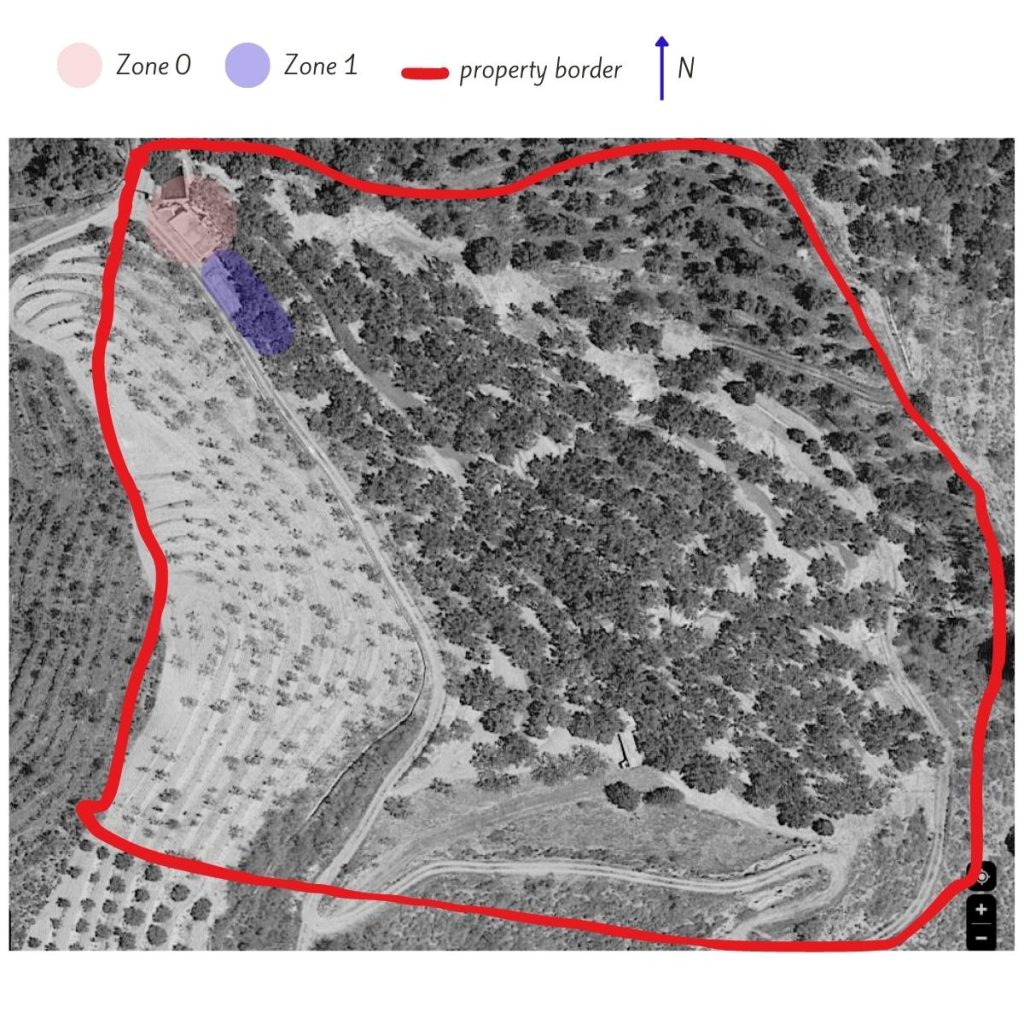| Location: | Spain |
| Client: | Finca Verde community & volunteers |
| Start and end of planning dates: | January 2023 – July 2023 |
| Type of project: | David Holmgren’s domains: Culture and Education 12 categories: Education Personal development and the ‘inner transition’ |
| Status: | In Progress |
| Design process: | GOBRADIMET |
Synopsis
For many volunteers spending time at Finca Verde is the first time that they have the opportunity to get a taste of living in the countryside and the first time that some have ever heard of permaculture as a concept or design philosophy. Whilst the work that they contribute to is important and precious to us we also want to give something back in appreciation of their contribution to our community.
We see learning opportunities everywhere around the property and hiding amongst everyday activities and therefore this design helps to highlight these opportunities to make them visible and accessible for volunteers who wish to avail of them.
Phase 0
Client Identification
The design is for implementation by the Finca Verde community and the transient visitors that pass throughout the year. It is meant to provide small and slow solutions that can be implemented in the short term and with a limited budget but with a model that can be replicated on an ongoing basis and also that can be replicated elsewhere.
Phase 1
Goals
The main goal of this design is to make visible, existing learning opportunities in the areas which are mostly frequented by volunteers.
I will know that I have succeeded with this design if:
- There are at least 3 learning opportunities created for zone 0 and 1 identified locations
- Each learning opportunity is signposted and made accessible to community members and volunteers
- There is an implemented system in place to collect feedback and implement improvements
David Holmgren’s Permaculture Principles
Observe & Interact
- Most volunteers seem interested in learning when spoken to one-on-one but very few come forward with questions independently
- The community members have little to no time to mentor people on a one-to-one basis outside of what they are already doing which is explaining the tasks

Obtain a yield
- Document and build on learning
- Encourage give back / skills sharing
- Increase quality of output in tasks

Use & Value renewable resources and services
- Use natural renewable resources available on site

Design from patterns to details
- Allow ideas to permeate across spaces and physical to non-physical spaces, from live locations to online documentation to give a view of how it all hangs together.

Use small & slow solutions
- For each idea, there is an assessment of time, and money investment needed versus value contribution towards the goal.


Catch & store energy
- Create a repository of learning for others who want to build on previous knowledge whether inside the community or elsewhere.

Apply self-regulation & accept feedback
- Increase feedback opportunities for volunteers to comment on their learning journeys
- Optimize activity so as not to add burden to the community members

Produce no waste
- Use materials that are available on-site
- Use leave no trace materials

Integrate rather than segregate
- Each idea should be integrated within the work that the volunteers are already doing, stacking functions and building on work already done before.

Use & Value Diversity
- Use the input from different volunteers to keep improving learning opportunities as we go along
Phase 2
Boundaries / Limitations
- Community members have little time
- Monetary resources are very limited
- Limited the design to Zone 0 and Zone 1
Resources
- A willing community
- Experiential wealth
- A lot of areas available for use
- A large library of books both physical and digital
- Volunteer time to carry out the implementation, evaluation and tweaking
Analysis
Zoning


Brian Storming

The brainstorming was a little methodical answering the below prompts
Location of the design: Finca Verde
What do we want to create: a learning environment
Which areas do we think in Zone 0 and Zone 1 would be suitable for this:
Zone 0
- wiki – our online knowledge management system
- Cozy corner
- Kitchen
- Pantry
- Library
- Arts and crafts corner
Zone 1
- Kitchen garden
- Almacen/Farm Storage
- Taller (open air)
Design
Phase 4
Implementation
Implementation tasks for each learning opportunity was logged into our project management system where volunteers are assigned their tasks, volunteers were asked to pick at least one learning opportunity task as part of their stay.
Implementation was made on two levels: a physical level and a documentation level on our wiki.
Maintenance
Volunteers were asked to give feedback about their learning opportunity activities in one or more ways:
- By documenting this on the work ticket on the project management system
- By talking directly with the community members
- By taking initiative and proposing improvements either by demonstrating these or talking through them
- By leaving anonymous feedback in the feedback jar
Feedback was reviewed on an ongoing basis at least once a week.
Phase 5
Evaluation
My goals for this design were:
- There are at least 3 learning opportunities created for each identified location
- Each learning opportunity is signposted and made accessible to community members and volunteers
- There is an implemented system in place to collect feedback and implement improvements
Reflections: Key learnings from the design process:
What aspects of the design process, tools, ethics or principles worked for me on this occasion?
I have also collected some of my reflections on the process here including some reflections on unexpected yields.